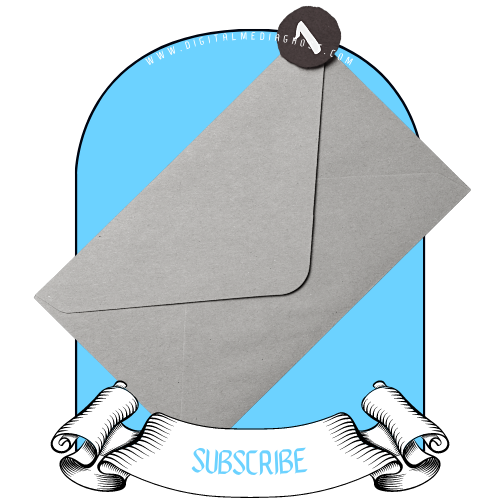Customer Lifetime Value (CLV) is an underused Marketing metric. Find out how to use it!Statistics show that repeat customers spend approximately 67% more than new ones. Furthermore, acquiring new customers can cost up to five times more. This therefore shows how important it is for businesses to get to grips with their CLV and proactively use it for marketing. To understand how to work out your CLV, check out this great infographic by Kissmetrics. Once you have your CLV, it’s time to start making it work for your business and apply it to your digital marketing campaigns. To help, we’ve put together the following guide to show how you can use CLV to create killer digital marketing campaigns. Step 1: Segment your customers When you have your CLV and know who your most valuable customers are, it’s time to segment your audience. Create three or four categories to separate the customers into. For example you could create the following groups:
Splitting your customers down like this will help you to establish where the marketing budget is best spent. It will also help you to target your efforts much more effectively. Step 2: Focus your campaigns and market to your existing customers Instead of coming up with a lead generation campaign for new business, focus on your existing customers. Specifically, the ones in that top category that bring the most profit to your business. Focus on how you can encourage those valuable customers to make their next purchase with you, whether it’s triggering their memory or offering a specific discount. Step 3: Develop a strategy To ensure you take advantage of your CLV and see a great ROI, it’s crucial that you have a plan. Don’t just wing it and see how it goes. Yes, to an extent, marketing is about trial and error but if you have no plan at all, you’re setting yourself up for a lot of ‘errors.’ So, get the team together and discuss your approach. How are you going to target your key customers? How are you going to encourage them increase their yearly spend with you? Here’s a handy guide on developing a creative marketing plan which will help ensure you’ve considered each element and have a strategy to move forward with. When building your plan, it’s also important to focus on the means you’ll use to attract those high value customers. Here’s a roundup. Email marketing This is one of the most direct approaches you can take and, when executed well, it can really pay off. However, consumers are bombarded with countless emails everyday which are either marked as spam or deleted. So, you have to stand out. You have to remember that you have the added advantage of already selling or providing a service to that person. Email subscribers are therefore familiar with your brand, making it easier for you to communicate. It’s important that you take advantage of this and really tailor your email to suit them. Get personal and share something that is of value to that individual. Runkeeper.com subscriber emails are a great example of this. The fitness app uses email to motivate users to get out and go running. They actively encourage people to stay fit and show a vested interest in their health. The emails also congratulate users when personal goals or milestones are reached. Their emails are therefore both personal and useful. This provides value to users, meaning they’re less likely to hit that unsubscribe button. If you are going to use email marketing, just make sure that you’re 100% clear on the new GDPR regulations which are being introduced this April. Loyalty schemes We’ve all got a stamp card for the local coffee shop or Nando’s lying around somewhere. “Buy 9 hot drinks and get your 10th free”... you know the drill. Loyalty schemes span far further a good old stamp card though and can be applied to your digital marketing efforts. Here’s a few popular types of loyalty schemes:
Take Esther & Co for example. They run a successful tiered loyalty scheme which is based on customers signing up, purchasing and referring. The clothing brand has also harnessed the power of Instagram and awards 25 loyalty points per post. By using these ‘micro-referrals’ the brand is keeping its marketing budget low whilst growing its audience. Combining social media with your loyalty scheme could work wonders. Not only are you engaging with your existing customers, you will simultaneously grow your audience through authentic user generated content. A smartphone app Apps offer a direct route to your target audience. It presents the chance to not only have a place on a user’s phone but to also send push notifications. Do remember, however, that this market is extremely crowded. Therefore, your app must offer real value and stand out from the competition for people to even consider downloading it. Push notifications are another entity which must also be carefully thought out. How many times have you deleted an app because of annoying notifications? People can also very easily disable them - so you have to show value. By downloading the app, users are already interested in your product. So, be sure to carefully craft push notifications that are going to be relevant and of interest to them. Think about your audience segments based on your CLV and consider what your customers want to see. An offer for their loyalty? Maybe an area based discount? Just be sure to keep them relevant and always offer value. ASOS aced this by creating the ideal place for customers to shop through their app. It’s slick and makes purchasing simple. In their own words, by downloading the app: “you’ll have 850+ brands in your pocket, with free delivery and easy returns – heaven, right? a card scanner does all the hard work at checkout and we’ll send you sales alerts...Best (free) investment ever.” They’ve aimed this so well at their target market and offered convenience and value (free). Which savvy ASOS shopper wouldn’t want this? So, when designing an app and strategy for it, take a leaf out of the e-commerce giant’s book and give real tangible reasons why your customers should download the app. Then continue to interact and offer value with relevant push notifications. Social media Social media is perfect for building relationships, which is key when it comes to using CLV. Building a rapport with your customers can have a real impact on their decision to shop with you. Showing your brand has personality and that you make time to engage with people can do wonders for business. Take GoPro for example, they get the power of social media and use it well. The camera brand encourages customers to send in their own shots and videos and shares them with their wider audience. This form of user generated content not only shows that they care about customers but also endorses the brand. Conclusion When you understand CLV and put it to good use, it can have an impressive impact on your digital marketing efforts. Your time will no longer be spent strategising and spending on attracting new leads and enquiries which may not even convert. Instead, you’ll nurture those who already see value in your brand and are more likely to spend.
Author Bio:
Ryan is a Digital Marketing Specialist at the Bradford based Digital Agency Harrison Mann. Being in the digital marketing field for 7 years now, he enjoys keeping up to date with the latest in all things digital and search. As a silent type, Ryan expresses plenty of his thoughts through writing. |
Categories
All
Archives
November 2023
|
|
Locations:
New Orleans, LA Nashville, TN |
|
Digital Media Ghost @2020
|



 RSS Feed
RSS Feed
